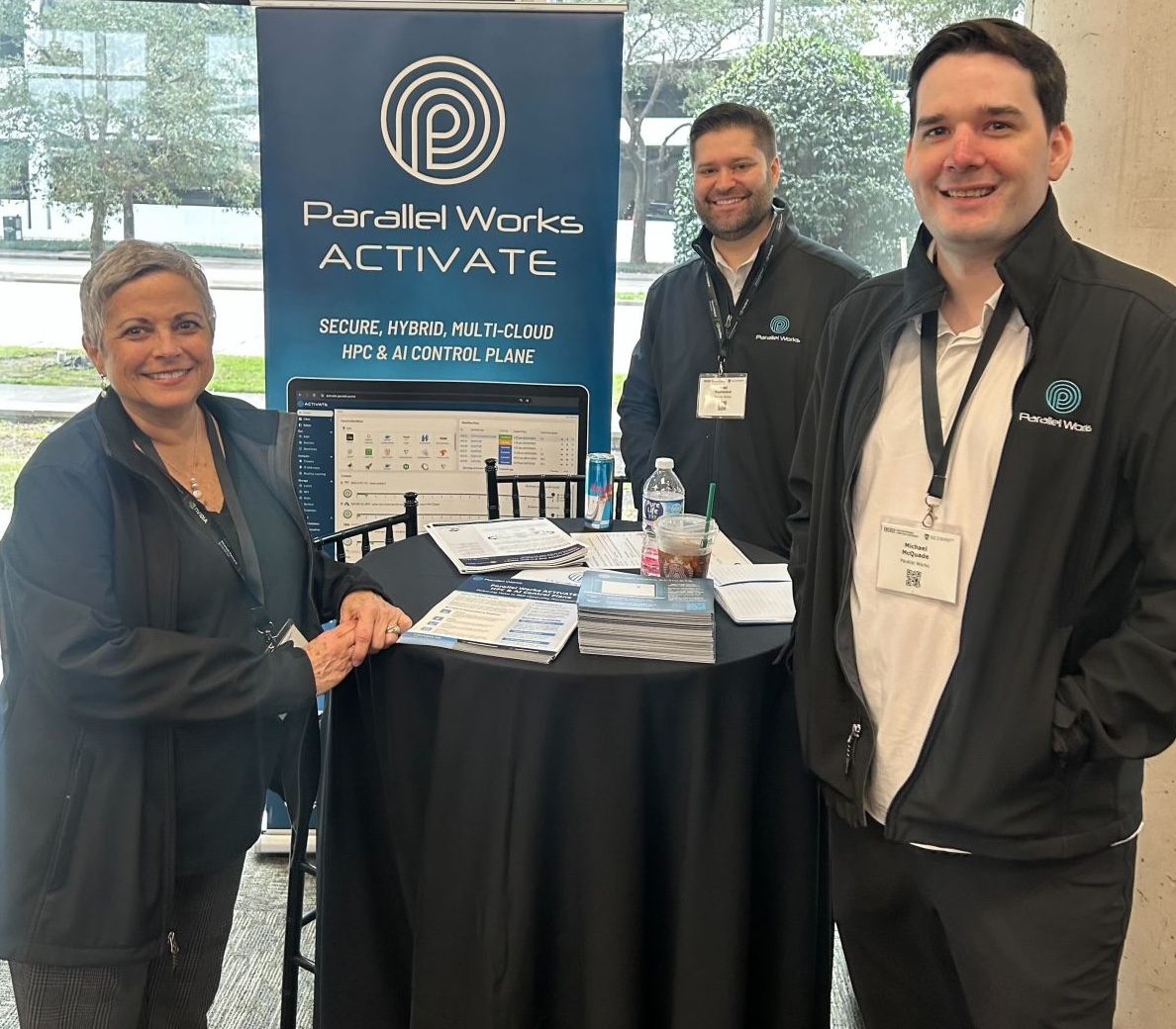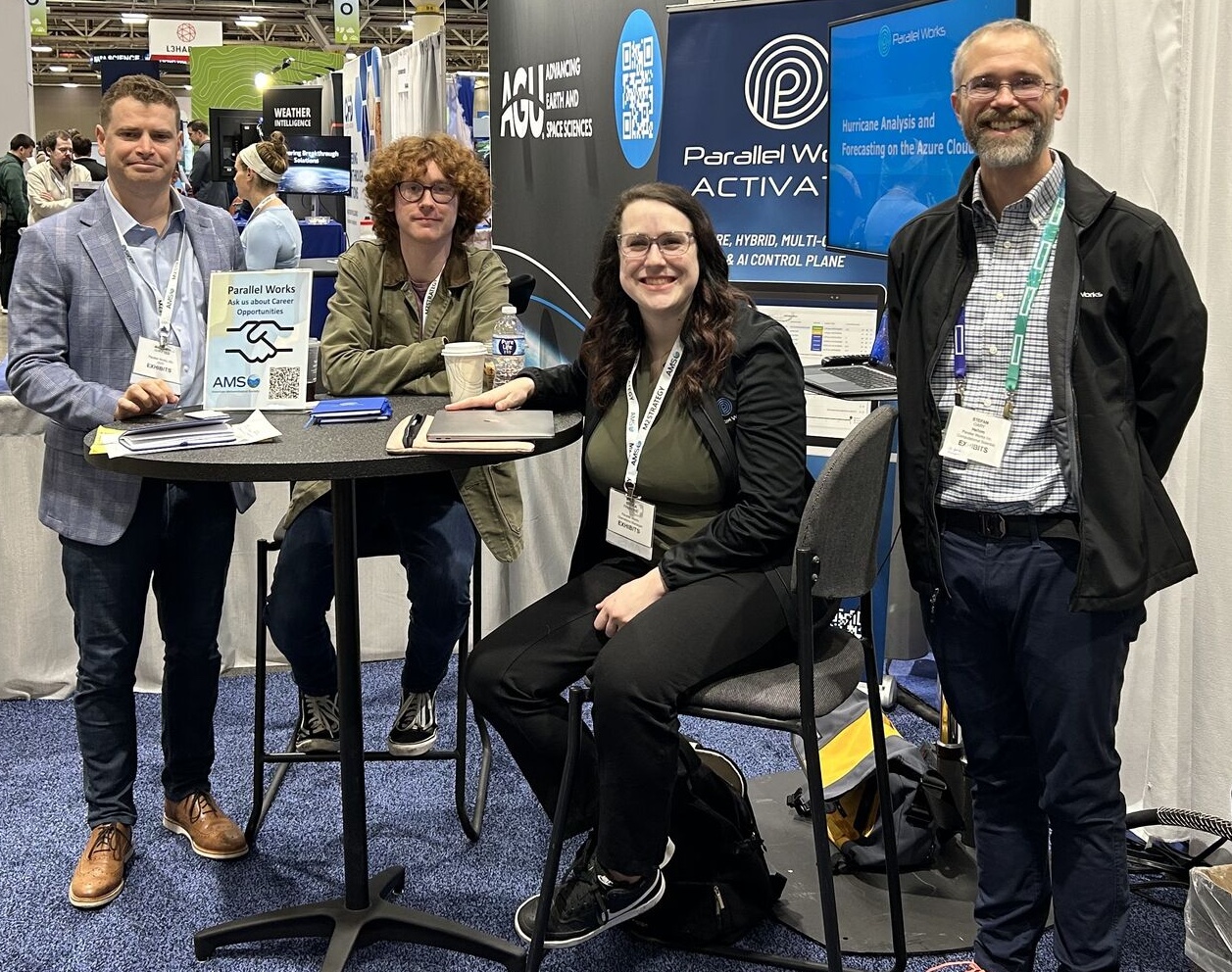Q1 2025 News and Changes
An overview of what changed at PW in the first quarter of 2025
 PW team members at Rice Ken Kennedy Energy HPC Conference 2025
PW team members at Rice Ken Kennedy Energy HPC Conference 2025
January
News
Several PW team members attended the American Meteorolgical Society (AMS) 105th Annual Meeting from January 12-16 in New Orleans.
 Left to right: CEO Matthew Shaxted, Support Engineer Matt Long, Director of Operations Becca Pannone, and Senior Application Engineer Stefan Gary
Left to right: CEO Matthew Shaxted, Support Engineer Matt Long, Director of Operations Becca Pannone, and Senior Application Engineer Stefan Gary
This year's theme was "Towards a Thriving Planet: Charting the Course Across Scales." PW was proud to present the capabilities of our ACTIVATE platform, particularly with how we empower climate scientists like those at NOAA.
Updates
For Administrators
Platform administrators can now toggle Debug Mode in a cluster's Advanced Settings section. When enabled, Debug Mode allows users to ssh into the node as it's starting by using ssh root@<nodeip>. You can use this method either from the user workspace or a user's personal computer if their public key has been added to the platform. Please note that node clean-up will not happen if there is any error during the provisioning process.
Organization administrators can now define a default sidebar for new users. You can see more information about this feature in Configuring User Defaults.
The option Use Controllers as NAT Gateways has been added on AWS and Google infrastructure configurations. Enabling this option will turn the controller node into a proxy, routing all traffic from compute nodes through the controller node. All compute nodes will share the same IP address as the controller node, which will enable tracking egress costs from compute nodes.
Capacity reservations are now supported on Azure and Google Cloud. When adding a capacity reservation, organization administrators can specify which CSP it is for.
For Users
We've added new CLI commands to list clusters, apps, workflows, and sessions.
We've also added a new search bar at the top of the platform's UI, which searches both items on the platform and in our documentation. Open the search bar with cmd + k on macOS or ctrl + k on Windows.
You can now provision public IP addresses on Azure independently of other compute resources. After provisioning a public IP address, it can then be assigned to a compute cluster's controller node.
OpenStack clusters are now generally available to create via the platform.
We now support managing NetApp ONTAP volumes directly from the ACTIVATE platform. These volumes can also be mounted to OpenStack clusters, which have network access to the NFS exports provided by the ONTAP service.
February
News
We were thrilled to be a sponsor at the Rice Ken Kennedy Energy HPC Conference. PW members had the opportunity to demonstrate ACTIVATE and attend talks by leading energy experts in HPC. You can view's Rice's recordings here.
 Left to right: Director of Sales and Business Development Phyllis Rhodes, Senior Sales Executive Brad Redmond, and Director of Engineering Michael McQuade
Left to right: Director of Sales and Business Development Phyllis Rhodes, Senior Sales Executive Brad Redmond, and Director of Engineering Michael McQuade
Updates
You can now manually create sessions without first starting a workflow. For more information, please see Running Sessions.
We've also added the ability to create OS snapshots. This is a direct replacement for the scripted method of creating OS images in your account settings. For more information, please see Creating OS Snapshots.
You can now update your cluster bootstrap script and its toggles (controller/compute) while a cluster is running.
Lastly, you can now receive runtime alerts for storage resources, which is located in the resource's Properties tab. Runtime alerts send you a notification after your storage has been running longer than the interval specified. You can configure whether you receive the notifications via the platform inbox or via email by going to Account > Notifications.
March
Updates
We've made a major update to our cluster UI that streamlines the process of configuring, running, and sharing clusters.
- A new action bar at the top of the cluster's page makes it easy to access cluster actions and configuration settings.
- Configuration details about a cluster, including its ownership and name, are on the Details page in the Cluster Definition module.
- Cluster provision status records show more information: you can now click on individual provision status lines to see more details.
- When attempting to shut down a cluster you will now be given the option to stop the controller. While stopped, costs will be reduced to only the cluster's storage. When you try to start a stopped cluster, you will be prompted to restart the cluster.
For more information about these changes, please see Navigating Clusters.
We also have two major updates to sessions.
- You can now manually create sessions of the Link type. Link sessions link to other applications or services from within the platform. In the past, a workflow would have created these in case a session is managed outside of the ACTIVATE platform.
- You can now configure a subdomain by toggling Use Custom Domain when creating a session. Additionally, when you launch a workflow that generates a session, it will automatically have its own subdomain. This update is useful because many applications assume they are running at the root of the domain; now, it will be easier to set up a running app on a cluster and launch a session.
These updates are documented in Running Sessions.
Upcoming Events
PW team members will be at booth A43 at the ISC High Performance 2025 in Hamburg, Germany from June 10th to 12th.
We'll also be attending the Trillion Parameter Consortium (TPC) All-Hands Hackathon and Conference. This event will be in San Jose, California, from July 28th to 31st. When we're given a booth number, we'll announce that on our LinkedIn page.
We hope to see you there!
Upcoming Changes
Our engineers are working on the following features:
- Improvements to our AI Chat interface
- Integration of cost tracking into Kubernetes
- Integration of GPU management into our preview Kubernetes provider, which will include support for fractional GPUs
